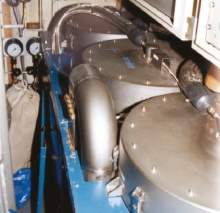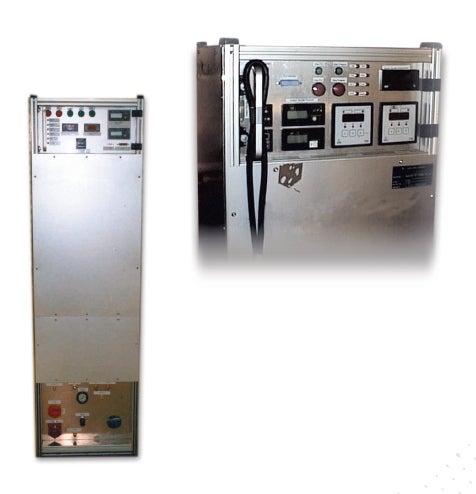

The RSBG represents the development of proven Airbus DS contamination control devices towards a regenerative system.
Research in the area of manned space flight led to the development of a system that satisfies the most stringent economic and ecological requirements.
The Regenerative Contamination Control Assembly (RSBG) removes carbon dioxide by means of the specific highly porous functionalised ion exchange resin AstrineTM as adsorbing material.
For the above-mentioned purpose, the RSBG contains at least two reaction beds filled with AstrineTM order to ensure a quasi continuous scrubbing process.
During adsorption, CO2 laden air is driven through the fixed resin bed. The CO2 is adsorbed by the resin purified air then leaves the resin bed.
There are several processes available to regenerate the Airbus DS resin AstrineTM, however, the preferable method is regeneration by means of slightly overheated steam.
This method is appropriate for applications requiring a very high scrubbing performance, as well as very pure CO2 release during regeneration.
Steam regeneration is the typical method suitable for submarine application. During regeneration, steam is applied to the previously
CO2 saturated bed, breaking the binding between the functional groups of the resin and the adsorbed carbon dioxide.
Due to repeated steam regeneneration cycles the RSGB removes, in addition to CO2, a remarkable amount of water soluble volatile organic compounds, VOC. Meanwhile, tens of thousands of operation hours have been achieved.
In general, every RSBG is a completely self-standing system, providing all operational features and controls.
Due to its modular design, the RSBG can be customised easily according to the specific submarine requirements.
The RSBG should be installed upstream of the submarine´s air ventilation system.


